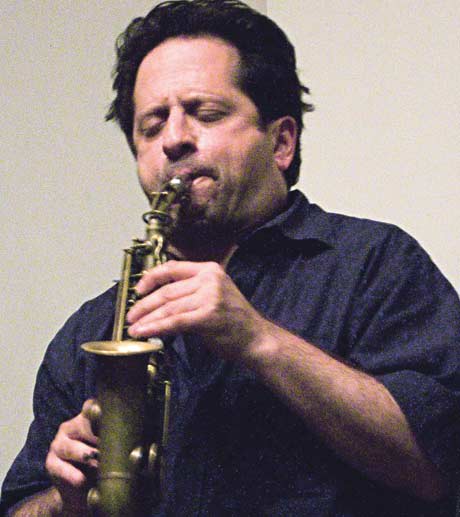Former Martha and the Muffins sax player Andy Haas has lived in New York for two decades. Hes been an active participant in the improvising flank of post-no-wave musicians. Haas was under-recorded until a few years ago but The Ruins of America marks his fifth album in the last three years. This time, he flies solo on wind instruments and live electronics, unaccompanied by any rhythm elements. Haass electronically processed soprano sax, Korean piri and fife represent some of the most dynamic and interactive use of augmented acoustic sources in the world today. But these are no unstructured improvisations everything is grounded in Haass twisted yet faithful takes on traditional Americana. Classic tunes by Irving Berlin, Antonio Carlos Jobim and others are forced through extreme harmonization and delay settings, yet there is always faithfulness to the source material. This is brilliantly displayed in the four-part title track, which fillets "America The Beautiful. America may be beautiful but its terrifying and grotesque as well. As with all his work, Haass knowledge of Asian techniques and harmonies adds more than just ironic overtones to these resolutely American songs. Haas forces globalization and modernity on these songs of the fading giant.
What has inspired your sensibility of electronic interaction with acoustic sources?
What intrigued me was the potential for extending the language of the saxophone to make sonic explorations musical. The 16-second delay lets me capture phrases as I play them, stretching or compressing the notes into sonic landscapes that still contain fragments of the song or melody. I have developed working methods with these effects that allow me to play the electronics and the horn in a way where they can respond to each other. The effects are an extension of my sound and language.
How do you keep the soprano sax from sounding like the cheesiest instrument of all time?
I started as an alto player and was never a big fan of the straight soprano sound for my playing. The curved soprano has a different tonal quality. Ive also always been fascinated by the sound of certain players that you can identify right away because they have such a personal tone. Paul Desmond, who I heard play in Toronto in the late 70s, was a big influence, and so was Ornette Coleman. So I focus a lot on the sound quality and developing techniques that allow me to broaden the palette I can draw from.
(Resonant)What has inspired your sensibility of electronic interaction with acoustic sources?
What intrigued me was the potential for extending the language of the saxophone to make sonic explorations musical. The 16-second delay lets me capture phrases as I play them, stretching or compressing the notes into sonic landscapes that still contain fragments of the song or melody. I have developed working methods with these effects that allow me to play the electronics and the horn in a way where they can respond to each other. The effects are an extension of my sound and language.
How do you keep the soprano sax from sounding like the cheesiest instrument of all time?
I started as an alto player and was never a big fan of the straight soprano sound for my playing. The curved soprano has a different tonal quality. Ive also always been fascinated by the sound of certain players that you can identify right away because they have such a personal tone. Paul Desmond, who I heard play in Toronto in the late 70s, was a big influence, and so was Ornette Coleman. So I focus a lot on the sound quality and developing techniques that allow me to broaden the palette I can draw from.
